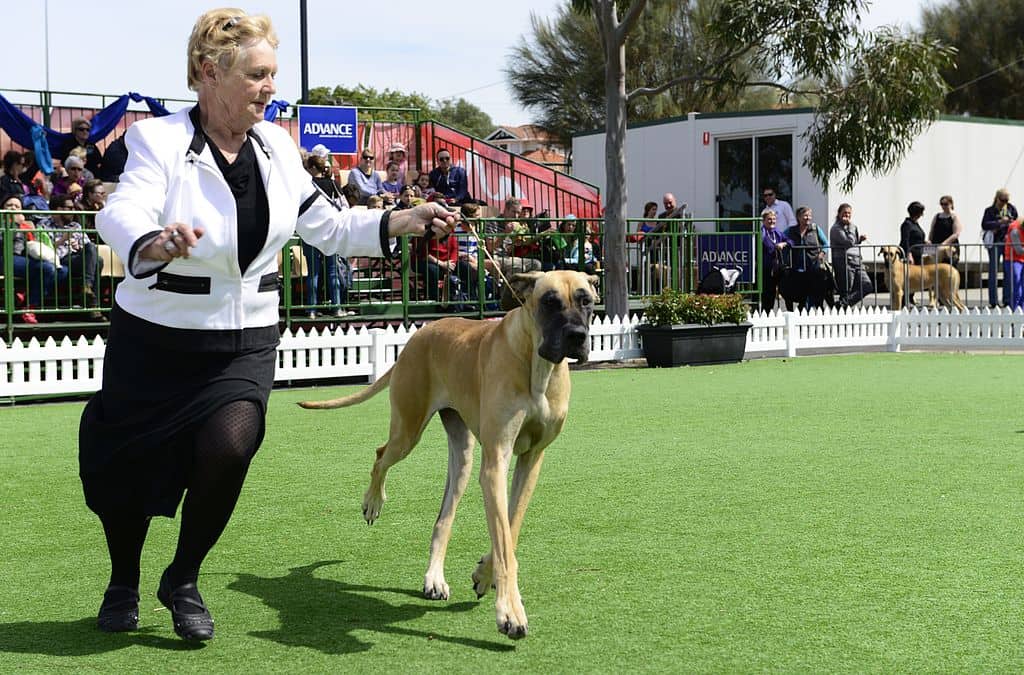The world of dog training has evolved dramatically over the decades, transforming from punishment-based methods to positive reinforcement techniques that respect canine psychology and behavior. Behind this evolution stands a remarkable group of visionaries who challenged conventional wisdom and revolutionized how we communicate with our four-legged companions. These pioneering dog trainers didn’t just teach basic commands—they fundamentally altered our understanding of the human-canine relationship, elevating it from simple obedience to a partnership built on mutual respect and understanding. Their methods have not only created better-behaved dogs but have strengthened the bonds between dogs and their owners worldwide. Let’s explore the lives and contributions of 10 legendary dog trainers whose innovative approaches and unwavering dedication to canine welfare have truly changed the game.
Cesar Millan The Controversial “Dog Whisperer”

Perhaps no modern dog trainer has achieved the mainstream fame of Cesar Millan. Born in rural Mexico, Millan crossed the border into the United States at age 21 with dreams of becoming the world’s best dog trainer. His rise to prominence came through his hit TV show “The Dog Whisperer,” which debuted in 2004 and ran for nine seasons, showcasing his work with aggressive and problematic dogs. Millan’s philosophy centers around what he calls “calm-assertive energy” and emphasizes the importance of exercise, discipline, and affection—in that order.
Despite his popularity, Millan remains a polarizing figure in the dog training community. Critics argue his methods rely too heavily on dominance theory and can be physically aversive. However, his contribution to bringing dog training into the mainstream consciousness is undeniable. Millan’s ability to communicate complex behavioral concepts to the general public through television has raised awareness about canine psychology and the importance of proper training, even as the field has moved beyond some of his methodologies. Today, Millan continues to evolve his approach, incorporating more positive reinforcement techniques into his training philosophy.
Barbara Woodhouse The Original TV Dog Trainer

Long before Cesar Millan became a household name, Barbara Woodhouse pioneered dog training on television. This British dog trainer rose to fame in the 1980s with her BBC series “Training Dogs the Woodhouse Way” and her catchphrase “walkies!” Her no-nonsense approach claimed she could train any dog in just six minutes. Born in 1910, Woodhouse became interested in dog training after her husband gave her an Irish Setter as a wedding present. She developed her distinctive training style characterized by firm commands and quick corrections, but also genuine affection for the animals.
Woodhouse’s contribution to dog training was revolutionary for her time. She brought dog training out of professional kennels and into living rooms around the world, democratizing access to training knowledge when few resources existed for average pet owners. While many of her methods would be considered outdated by today’s standards, her emphasis on consistency and clear communication remain valuable principles. She authored several books including “No Bad Dogs” and helped countless owners establish better relationships with their pets before her death in 1988. Her legacy lives on as the first celebrity dog trainer who made the public realize that problem dogs were often the result of untrained owners rather than “bad” animals.
Karen Pryor Pioneer of Clicker Training

Few individuals have transformed animal training as profoundly as Karen Pryor. A marine biologist by training, Pryor began her career working with dolphins in the 1960s, where she utilized operant conditioning techniques. Her revolutionary insight was applying these same principles to dog training through what became known as “clicker training.” This method uses a small mechanical device that makes a distinct clicking sound to mark the precise moment a dog performs a desired behavior, followed by a reward. This timing precision allows for clearer communication between human and animal, making learning faster and more enjoyable for dogs.
Pryor’s 1984 book “Don’t Shoot the Dog” became a cornerstone text not just for dog trainers but for anyone interested in behavior modification across species. She founded Karen Pryor Clicker Training (KPCT) and the Clicker Training website, which have educated countless trainers and pet owners worldwide. Her emphasis on positive reinforcement and her rejection of punishment-based methods represented a paradigm shift in animal training. At a time when choke chains and corrections were standard practice, Pryor’s approach was truly revolutionary. Today, clicker training is used not just with dogs but in zoos, aquariums, and with service animals, cementing her legacy as one of the most influential animal trainers in history.
Ian Dunbar The Science-Based Training Innovator

Dr. Ian Dunbar, a veterinarian with a Ph.D. in animal behavior, fundamentally changed how we approach dog training by emphasizing the critical importance of early puppy socialization and prevention of behavior problems. In 1982, he developed the first off-leash puppy socialization and training classes, a radical concept at the time when conventional wisdom held that training shouldn’t begin until dogs were at least six months old. Dunbar recognized that the critical socialization period for puppies occurs much earlier—between 3 and 12 weeks—and that early positive experiences were crucial for developing well-adjusted adult dogs.
Dunbar founded Sirius Puppy Training and later the Association of Pet Dog Trainers (APDT), which has grown into an international organization with thousands of members. His evidence-based approach combines scientific understanding with practical applications accessible to average dog owners. Through books like “Before and After Getting Your Puppy” and his Dog Star Daily website, Dunbar has educated millions about the importance of using positive reinforcement methods. His revolutionary concept of “dog-friendly training” emphasizes that training should be enjoyable for both dogs and humans, rejecting the notion that effective training must involve fear or intimidation. Dunbar’s scientific approach to training and his emphasis on prevention rather than rehabilitation have influenced nearly every modern positive reinforcement trainer.
Victoria Stilwell Positive Training for the Masses

Victoria Stilwell brought positive reinforcement training to mainstream audiences through her popular TV series “It’s Me or the Dog,” which first aired in 2005. With her signature black outfit and British accent, Stilwell entered homes across the UK and later the US, demonstrating how reward-based methods could transform even the most challenging canine behaviors. Unlike some of her television predecessors, Stilwell firmly rejected dominance-based approaches, instead advocating for understanding dogs’ emotional needs and natural behaviors. Her catchphrase “positive reinforcement works, confrontational training methods don’t” became a rallying cry for a new generation of dog trainers.
Beyond television, Stilwell has created a global impact through her Victoria Stilwell Academy for Dog Training and Behavior, which certifies trainers in her methodology. She’s authored multiple books including “Train Your Dog Positively” and maintains an active presence advocating for force-free training and responsible pet ownership. Stilwell has been particularly influential in countering harmful training myths perpetuated in media, using her platform to educate the public about the science behind modern training methods. Her work with animal shelters and rescue organizations has helped countless dogs find and keep forever homes by addressing behavior issues with compassion and effectiveness. As one of the most visible female figures in dog training, she has inspired many women to enter the field professionally.
Patricia McConnell Bridging Science and Practical Training

Dr. Patricia McConnell stands out as a rare combination of rigorous scientist, gifted communicator, and practical dog trainer. With a Ph.D. in Zoology specializing in animal behavior, McConnell has spent decades studying the emotional lives of dogs and how they communicate with humans. Her groundbreaking book “The Other End of the Leash” (2002) helped pet owners understand the fundamental differences between primate and canine communication, explaining why so many human-dog interactions go awry despite good intentions. McConnell’s unique ability to translate complex ethological concepts into accessible guidance has made her work essential reading for both professionals and pet owners.
For 14 years, McConnell co-hosted the nationally syndicated radio show “Calling All Pets,” bringing science-based animal behavior information to millions of listeners. As a Certified Applied Animal Behaviorist, she has worked with thousands of dogs with serious behavioral issues, particularly aggression and fear. Her gentle, empathetic approach emphasizes the importance of understanding a dog’s emotional state rather than just manipulating behavior. McConnell’s farm in Wisconsin became a living laboratory where she studied and demonstrated the complex interactions between humans, dogs, and other animals. Her influence extends beyond training techniques to a deeper philosophical shift in how we view and value our relationships with dogs as emotional beings worthy of respect and understanding.
Sophia Yin Veterinary Behaviorist and Low-Stress Handling Pioneer

Dr. Sophia Yin revolutionized both veterinary medicine and dog training by focusing on the emotional well-being of animals during handling and training procedures. A veterinarian with a master’s degree in animal science, Dr. Yin became concerned about the high levels of fear and stress animals experienced during veterinary visits and routine handling. Her response was to develop and popularize “low-stress handling” techniques that prioritized an animal’s emotional comfort while still accomplishing necessary medical and training goals. Her 2009 book “Low Stress Handling, Restraint and Behavior Modification of Dogs & Cats” has transformed protocols in veterinary practices worldwide.
Dr. Yin’s innovative “Learn to Earn” program applied operant conditioning principles to everyday interactions between dogs and their owners, teaching dogs to look to their humans for guidance. She created numerous educational resources including books, videos, and the first illustrated poster depicting canine body language signals. Before her untimely death in 2014, Dr. Yin was a tireless educator who taught veterinarians, trainers, and pet owners alike through her website, lectures, and workshops. Her emphasis on reading subtle body language cues to assess an animal’s comfort level was groundbreaking. Though her life was cut short, Dr. Yin’s influence continues through the thousands of professionals she trained and the millions of animals who benefit from gentler, more respectful handling techniques.
Bob Bailey The Operant Conditioning Master

Few dog trainers can claim the breadth of experience or depth of knowledge possessed by Bob Bailey. His career began not with dogs but with the U.S. Navy’s marine mammal program in the 1960s, where he trained dolphins and other marine animals for military applications. Bailey later became the executive director of Animal Behavior Enterprises (ABE), a groundbreaking company founded by Keller and Marian Breland (students of B.F. Skinner) that trained thousands of animals across dozens of species for commercial entertainment, research, and government work. Under Bailey’s leadership, ABE refined operant conditioning techniques to unprecedented levels of precision and effectiveness.
Bailey’s mantra “training is a mechanical skill” emphasizes that successful animal training relies not on dominance or special relationships but on the precise application of scientifically validated principles. His workshops, particularly the highly intensive “chicken training camps,” have become legendary in the training community. By having students train chickens—animals with fast reactions and no emotional attachment to humans—Bailey demonstrated that the principles of operant conditioning work across species and that training success depends on the trainer’s mechanical skills rather than the animal’s willingness to please. Though semi-retired, Bailey continues to influence the field through occasional seminars and his famous saying, “Pavlov is always on your shoulder,” reminding trainers that classical conditioning is always occurring alongside operant work. His insistence on data-driven methods and measurable results has elevated the entire field of animal training.
Jean Donaldson Advocate for Ethical, Evidence-Based Training

Jean Donaldson has been a fierce and articulate champion for humane, scientifically sound dog training methods since the publication of her paradigm-shifting book “The Culture Clash” in 1996. This groundbreaking work challenged anthropomorphic views of dog behavior and exposed the flaws in dominance-based training theories that were prevalent at the time. Donaldson founded the Academy for Dog Trainers in 1999, often referred to as “the Harvard of dog training schools,” which has set the gold standard for professional education in the field. Her curriculum emphasizes both the science of learning theory and the practical skills needed to apply these principles effectively with real dogs and their owners.
Donaldson’s influence extends beyond her school through her numerous books, including “Dogs Are From Neptune” and “Oh Behave!”, which blend scientific rigor with accessible writing and practical advice. She has been uncompromising in her criticism of training methods that rely on intimidation or pain, arguing that such approaches are not only ethically problematic but also less effective than positive reinforcement. Her emphasis on functional analysis—looking at what maintains problematic behaviors rather than labeling dogs with psychological traits—has helped countless trainers develop more effective behavior modification plans. Through her teaching and writing, Donaldson has raised the bar for the entire profession, insisting that dog trainers be knowledgeable about learning theory, skilled in its application, and committed to humane practices.
William Koehler The Traditional Training Methodologist

No discussion of influential dog trainers would be complete without acknowledging William Koehler, whose methods dominated dog training in America from the 1940s through the 1970s. As the chief trainer for the War Dog Training Center during World War II and later as the lead animal trainer for Walt Disney Studios, Koehler developed a systematic approach to training that emphasized consistency and clear consequences. His 1962 book “The Koehler Method of Dog Training” sold over one million copies and became the standard text for both professional trainers and pet owners for decades. His methods produced reliably obedient dogs and dominated competitive obedience for years.
Koehler’s approach relied heavily on leash corrections and negative reinforcement, with dogs learning to comply to avoid discomfort. While these methods are now widely criticized by modern trainers as unnecessarily harsh, in their historical context, they represented a step forward from even more punitive approaches common at the time. Koehler emphasized consistency, timing, and fairness within his paradigm, insisting that corrections should be immediately followed by praise when the dog complied. His legacy is complex—modern trainers have largely moved away from his methods as science has revealed more effective and humane alternatives, yet his systematic approach to training and emphasis on reliability have influenced even those who reject his techniques. Understanding Koehler’s historical influence provides important context for appreciating the revolutionary nature of the positive training movement that would follow.
Conclusion: The Lasting Impact of Revolutionary Dog TrainersSophia Yin

The evolution of dog training from Koehler’s traditional methods to the science-based, positive approaches championed by figures like Pryor, Dunbar, and Donaldson represents one of the most significant shifts in our relationship with domestic animals. These pioneering trainers have collectively transformed dog training from a discipline based primarily on folk wisdom and dominance into a sophisticated field grounded in behavioral science and ethical considerations. Their work has not only improved the lives of countless dogs but has deepened our understanding of animal cognition, emotion, and learning.
The ripple effects of these trainers’ contributions extend far beyond the realm of dogs. Many of their principles have been applied to the training of other species, from zoo animals to marine mammals, and even to human education and corporate management. Their emphasis on clear communication, positive reinforcement, and respect for the learner’s emotional state has broad applications across fields. As we continue to refine our understanding of animal behavior and cognition, the fundamental insights these trainers provided will remain relevant and valuable.
Perhaps the most profound legacy of these revolutionary dog trainers is the philosophical shift they inspired—from viewing dogs as subordinates to be commanded to seeing them as sentient partners in a cooperative relationship. This shift reflects broader changes in our society’s attitudes toward animals and has contributed to improvements in animal welfare legislation and practices. Through their books, programs, schools, and media appearances, these trainers have educated millions about more effective and compassionate ways to live and work with dogs, ensuring their influence will continue for generations to come.
As we look to the future of dog training, the foundation laid by these pioneers provides a solid platform for further innovation. New technologies like remote training apps, advances in understanding canine cognition, and evolving ethical standards will all shape the field’s development. However, the core principles established by these game-changers—that training should be based on sound science, that it should respect the dog’s nature and well-being, and that the human-canine relationship should be built on mutual trust rather than fear—will undoubtedly endure as their most important and lasting contribution.
- 10 Famous Dog Trainers Who Changed the Game - August 8, 2025
- How the Grizzly Bear Uses Its Strength to Survive in the Wild - August 8, 2025
- Top 10 Animals and Wildlife in the Congo Basin - August 8, 2025

